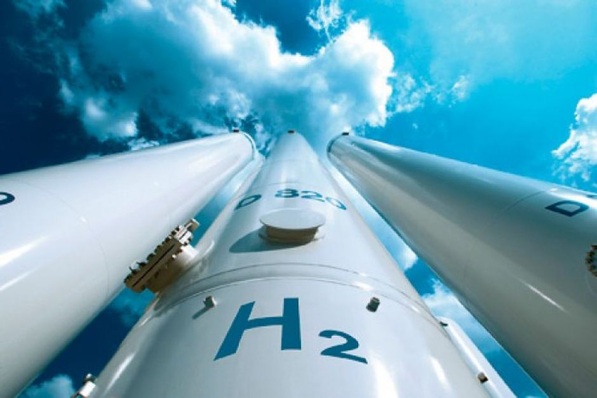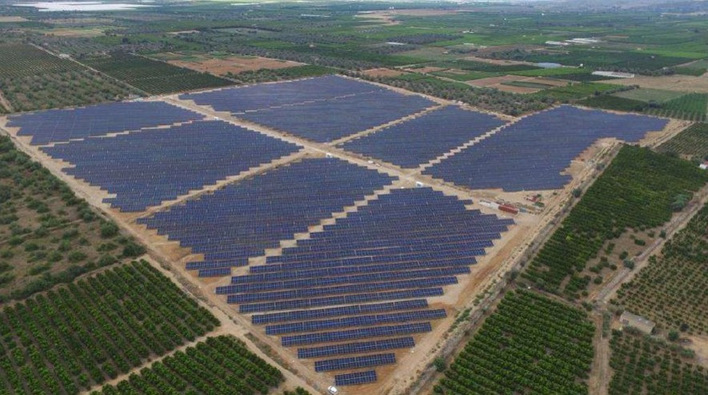The energy transition requires more than 10 times solar and 5 times wind power in combination with other technology measures to limit global warming to well below 2°C and meet the targets of the Paris Agreement, according to DNV GL’s latest Energy Transition Outlook: Power Supply and Use report. The report finds that the energy transition is gathering pace more quickly than previously thought but the rate is still too slow to limit global temperatures rising by well below 2°C as set out in the Paris Agreement.
At the projected pace, DNV GL’s forecast indicates a world that is most likely to be 2.4°C warmer at the end of this century than in the immediate pre-industrial period. The technology already exists to curb emissions enough to hit the climate target. What is needed to ensure this happens are far-reaching policy decisions.
DNV GL recommends that the following technology measures are put in place to help close the emissions gap, the difference between the forecasted rate at which our energy system is decarbonizing and the pace we need to reach, to limit global warming to well below 2°C as set out by the Paris Agreement.
Combination of measures
- Grow solar power by more than ten times to 5TW and wind by 5 times to 3TW by 2030, which would meet 50% of the global electricity use per year.
- 50-fold increase in production of batteries for the 50 million electric vehicles needed per year by 2030, alongside investments in new technology to store excess electric energy and solutions that allow our electricity grids to cope with the growing influx of solar and wind power.
- Create new infrastructure for charging electric vehicles on a large scale.
- More than $1.5trn of annual investment needed for the expansion and reinforcement of power grids by 2030, including ultra-high-voltage transmission networks and extensive demand-response solutions to balance variable wind and solar power.
- Increase global energy efficiency improvements by 3.5% per year within the next decade.
- Green hydrogen to heat buildings and industry, fuel transport and make use of excess renewable energy in the power grid.
- For the heavy industry sector: increased electrification of manufacturing processes, including electrical heating. Onsite renewable sources combined with storage solutions
- Heat-pump technologies and improved insulation.
- Massive rail expansion both for city commuting and long-distance passenger and cargo transport.
- Rapid and wide deployment of carbon capture, utilization and storage installations.
Energy transition is not fast enough
The staggering pace of the energy transition continues. DNV GL’s report forecasts that by 2050 power generation from solar photovoltaic and wind energy will be 36,000 terawatt hours per year, more than 20 times today’s output. Greater China and India will have the largest share of solar energy by mid-century, with a 40% share of global installed PV capacity in China, followed by the Indian Subcontinent at 17%.
Globally, renewable energy will provide almost 80% of the world’s electricity by 2050 according to the report. The electrification will see increasing use of heat pumps, electric arc furnaces and an electric vehicle revolution, with 50% of all new cars sold in 2032 being electric vehicles.
Despite this rapid pace, the energy transition is not fast enough. DNV GL’s forecast indicates that, alarmingly, for a 1.5°C warming limit, the remaining carbon budget will be exhausted as early as 2028, with an overshoot of 770 Gt CO2 in 2050.
“Our research shows that technology has the power to close the emissions gap and create a clean energy future. But time is against us. Those technology measures can only be successful if they are supported by extraordinary policy action. We are calling for government policies to expand and adapt power grids to accommodate the rise of renewables, economic stimulus for energy efficiency measures and regulatory reform to accelerate the electrification of transport,” said Ditlev Engel, CEO of DNV GL Energy. “Governments, businesses and society as a whole need to change the prevailing mindset from ‘business-as-usual’ to ‘business-as-unusual’ to fast-track the energy transition.”
Plunging costs - declining expenditure on energy
The report also demonstrates that the energy transition is affordable, the world will spend an ever-smaller share of GDP on energy. Global expenditure on energy is currently 3.6% of GDP but that will fall to 1.9% by 2050. This is due to the plunging costs of renewables and other efficiencies, allowing for greater investment to accelerate the transition.
DNV GL appeals to all 197 countries that signed the Paris Agreement to raise and realize increased ambitions for their updated Nationally Determined Contributions by 2020. In a snapshot of the first NDCs submitted to the United Nations Framework Convention on Climate Change secretariat, 75% currently refer to renewable energy, and 58% to energy efficiency. DNV GL calls on political leaders that both these percentages need to be 100% in the second NDCs. (HCN)







